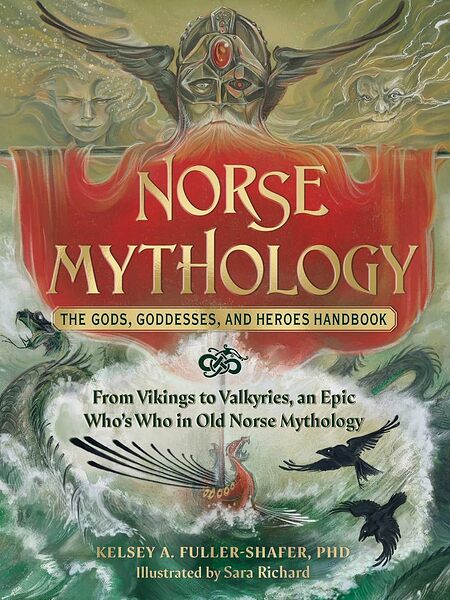Looking for a good read? Here is a recommendation. I have an unusual approach to reviewing books. I review books I feel merit a review. Each review is an opportunity to recommend a book. If I do not think a book is worth reading, I find another book to review. You do not have to agree with everything every author has written (I do not), but the fiction I review is entertaining (and often thought-provoking) and the non-fiction contain ideas worth reading.
Book Review
Norse Gods and Goddesses - Then and Now
Reviewed by Mark Lardas
December 17, 2023
“Norse Mythology, The Gods, Goddesses, and Heroes Handbook: From Vikings to Valkyries, an Epic Who’s Who in Old Norse Mythology,” by Kelsey A. Fuller-Shafer, illustrated by Sara Richard, Adams Media, 2023, 240 pages, $16.99 (hardcover), $10.99 (e-book),$14,95 (audiobook) $29.99 (audio CD)
Norse mythology has become a big part of popular recent culture. Books, games, and movies with Norse themes abound, with flavors running from high epic fantasy to slapstick humor, and just about everything in between.
“Norse Mythology, The Gods, Goddesses, and Heroes Handbook: From Vikings to Valkyries, an Epic Who’s Who in Old Norse Mythology,” by Kelsey A. Fuller-Shafer, illustrated by Sara Richard, offers a gateway into Norse legend. It provides both the original myths and background and describes popular modern alterations to the mythology. It is broken into four parts.
The first part provides the historical background to Norse mythology, including the basic story arcs. It describes the times in which they arose, and the basic elements and beliefs of Nordic culture. This includes the structure of the mythical Norse world, including its basic parts. It also introduces the primary original sources of these legends and discusses how pop culture has altered the mythology.
The second introduces the gods and goddesses of the Norse pantheon. This includes profiles of each, their characteristics, and the main stories about them. The Aesir and Vanir make up what we consider the “good guys,” although they are revealed as having sketchy elements in their original forms.
The third presents the adversaries of the Aesir and Vanir. These include the giants (or Jotun) and various monsters with which the Norse gods fought. Among them are the Midgard Serpent and the Fenris Wolf. Loki numbers among these, too.
The fourth turns its focus to the human heroes of Norse myth. These include both mythical figures and actual historical figures whose deeds have been embellished into legend. Among the fictional heroes are the Volsung, Ragnar Lothbrok and his sons, and Hrolf Kraki and his Champions. King Harald, a historical figure who united Norway, is an actual individual braided into myth.
The book was written by an academic, but is far from dull. It offers a lively presentation of the players with many interesting sidebars and lots of unexpected information. This book is highly illustrated. The illustrations are not necessary to understand the content, but add to the reading experience. If you get an e-version you might want a reader capable of rendering the drawings in color.
“Norse Mythology” a useful guidebook for those interested in Norse myth. Whether you seek a readable introduction to it or are seeking a quick reference guide, it is worth reading.
Mark Lardas, an engineer, freelance writer, historian, and model-maker, lives in League City. His website is marklardas.com.
